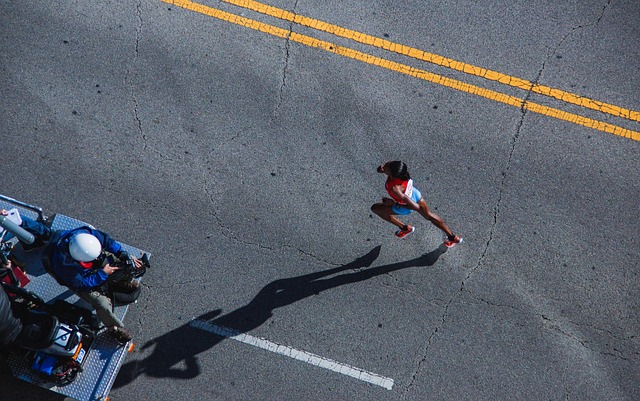When a photographer sets out on a field trip, the first instinct is often to focus on the scene, the light, the subject. Yet beneath the surface of every frame lies a hidden layer of information that can transform a good photo into a masterful one: GPS data. Modern cameras and smartphones now embed latitude, longitude, altitude, and timestamp data directly into the image file. By tapping into this metadata, photographers gain a powerful tool for mapping the precise moments that delivered the best composition, exposure, and narrative.
From Manual Logs to Digital Coordinates
Historically, photographers kept handwritten logbooks to record where, when, and how a shot was taken. This practice was laborious and often incomplete. The advent of GPS-enabled devices replaced paper with precise, automatically recorded coordinates. The integration of GPS data into the camera’s image file means that every click is accompanied by a digital breadcrumb trail. This shift allows photographers to revisit exact locations and times without relying on memory, and it creates a data-driven archive that is searchable and shareable.
- Automatic geotagging saves time and reduces human error.
- Coordinates can be linked to elevation data for 3‑D context.
- Time stamps synchronize images with environmental conditions.
Enhancing Composition with Spatial Awareness
GPS data introduces a spatial perspective that complements traditional compositional rules. By overlaying a map onto a portfolio, photographers can analyze how angles, distances, and terrain influence the final image. This spatial analysis helps in identifying recurring motifs such as dominant horizons, leading lines, or symmetrical frames that work best at specific coordinates. When a photo shows a particular sunrise over a cliff, the GPS tag pinpoints the exact spot, enabling future shoots under similar conditions.
“Knowing where a great composition came from is the first step toward reproducing it.” — Anonymous Landscape Enthusiast
Tracking Light, Shadow, and Weather Patterns
Light is the most critical element in photography. By coupling GPS coordinates with time stamps, photographers can map the path of the sun across a landscape. This mapping reveals the golden hour window at specific sites, the shadow lengths during midday, or the angle of rainbows at certain elevations. Some advanced camera systems even log temperature and humidity, allowing a comprehensive environmental snapshot. These data layers help photographers plan future shoots with precision, reducing trial and error and maximizing creative outcomes.
Memory, Reproducibility, and Creative Consistency
Recreating a memorable shot is often a challenge. GPS data provides a definitive reference point for location, making it easier to return to the same spot or a nearby one that offers a comparable backdrop. When combined with camera settings stored in the file, the reproducibility process becomes almost mechanical. A photographer can retrieve a past image, open the metadata, and adjust the camera to identical settings—aperture, shutter speed, ISO—before heading out. This practice ensures consistency across a series, a valuable asset for narrative storytelling or commercial shoots.
Community, Collaboration, and Open Data
The sharing of GPS-tagged images has given rise to vibrant communities of photographers who collaborate on location-based projects. Online platforms allow users to upload geotagged photos, annotate them with descriptive tags, and share insights about the best shooting times or gear settings for that spot. This collective knowledge pool enables emerging photographers to learn from seasoned veterans, while also contributing fresh perspectives back to the community. Open data initiatives further expand the possibilities, letting researchers and hobbyists alike analyze visual trends across regions.
- Upload images to public galleries with GPS tags.
- Annotate each image with contextual notes (weather, lighting).
- Cross‑reference with other users’ contributions for comprehensive guides.
Technical Considerations for Accurate GPS Capture
While GPS data is invaluable, its accuracy depends on several technical factors. A clear view of the sky yields the most precise coordinates; indoor or obstructed environments can degrade signal quality. Photographers should ensure that the device’s firmware supports full satellite reception and that geotagging is enabled before shooting. Some cameras offer the option to log GPS data to an external receiver or smartphone, which can provide higher precision. Understanding these nuances helps in maintaining the reliability of the metadata.
Future Trends: From AI to Autonomous Shooting
As artificial intelligence continues to permeate photography, GPS data will play an increasingly pivotal role. AI algorithms can analyze vast libraries of geotagged images to recommend optimal shooting times, suggest composition tweaks based on historical data, or even automate the camera’s settings for a given location. Autonomous drones equipped with high‑resolution GPS and mapping capabilities are already capturing footage that is impossible to replicate manually. The convergence of GPS data, AI, and automation promises a future where the creative process is guided by data-driven insights.
Ethical and Privacy Concerns
With great power comes great responsibility. GPS tags expose the exact location of images, which can raise privacy issues if the subject or location is sensitive. Photographers should be mindful of local regulations and the expectations of privacy, especially when shooting in protected areas or private property. An ethical approach includes checking whether the geotagged coordinates could inadvertently reveal personal information or compromise the safety of individuals featured in the photo.
Conclusion: A Compass for Creative Journeys
GPS data is more than a technical convenience; it is a compass that guides photographers through the complex terrain of visual storytelling. By embedding precise location, timing, and environmental information into each image, it transforms the process from intuition to informed decision‑making. As technology advances, the synergy between GPS data, AI, and community collaboration will continue to enrich the photographic landscape, enabling artists to capture the world with unprecedented clarity, intent, and consistency. The next time you press the shutter, remember that behind every click lies a digital map pointing to a perfect shot waiting to be rediscovered.


